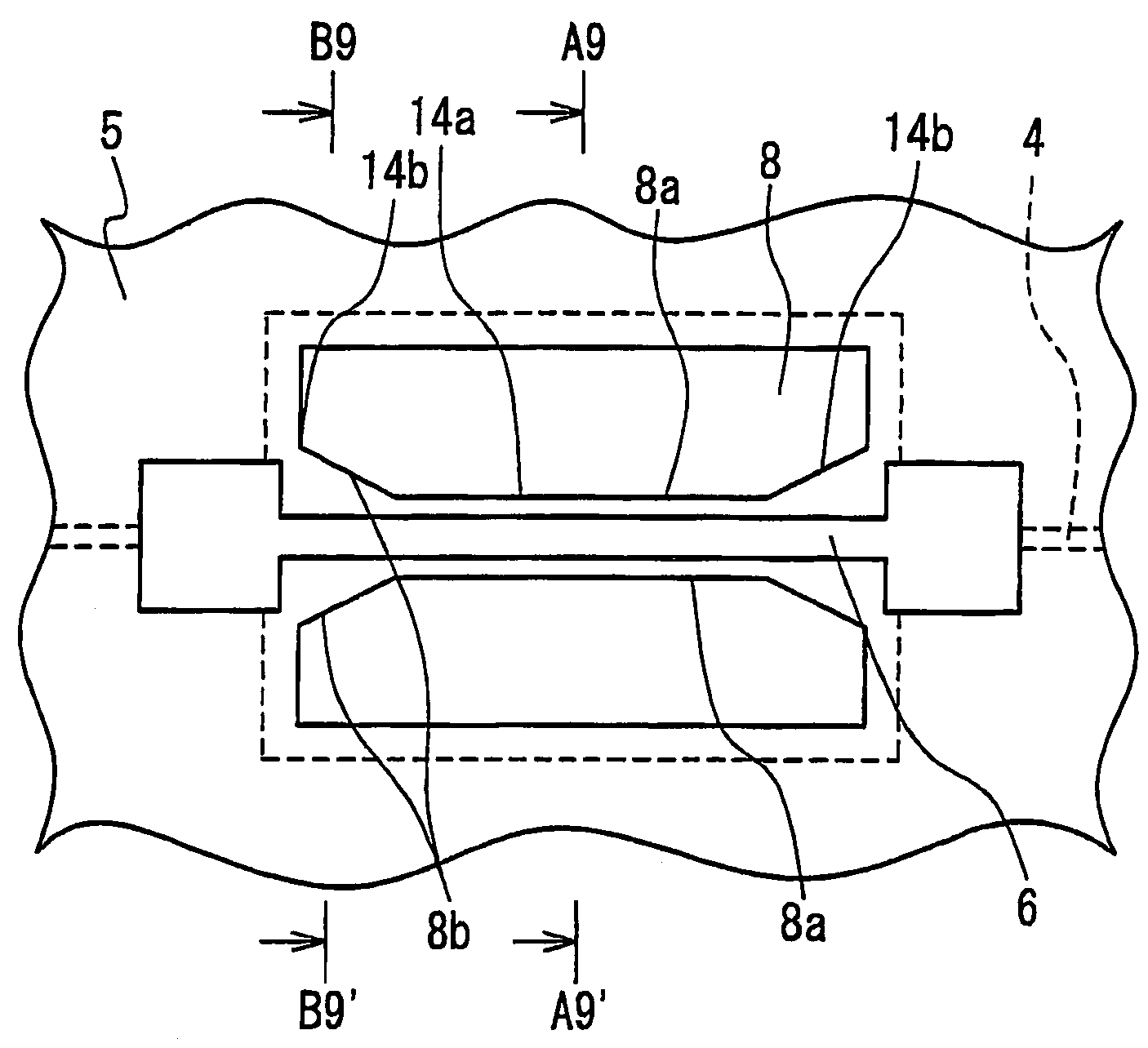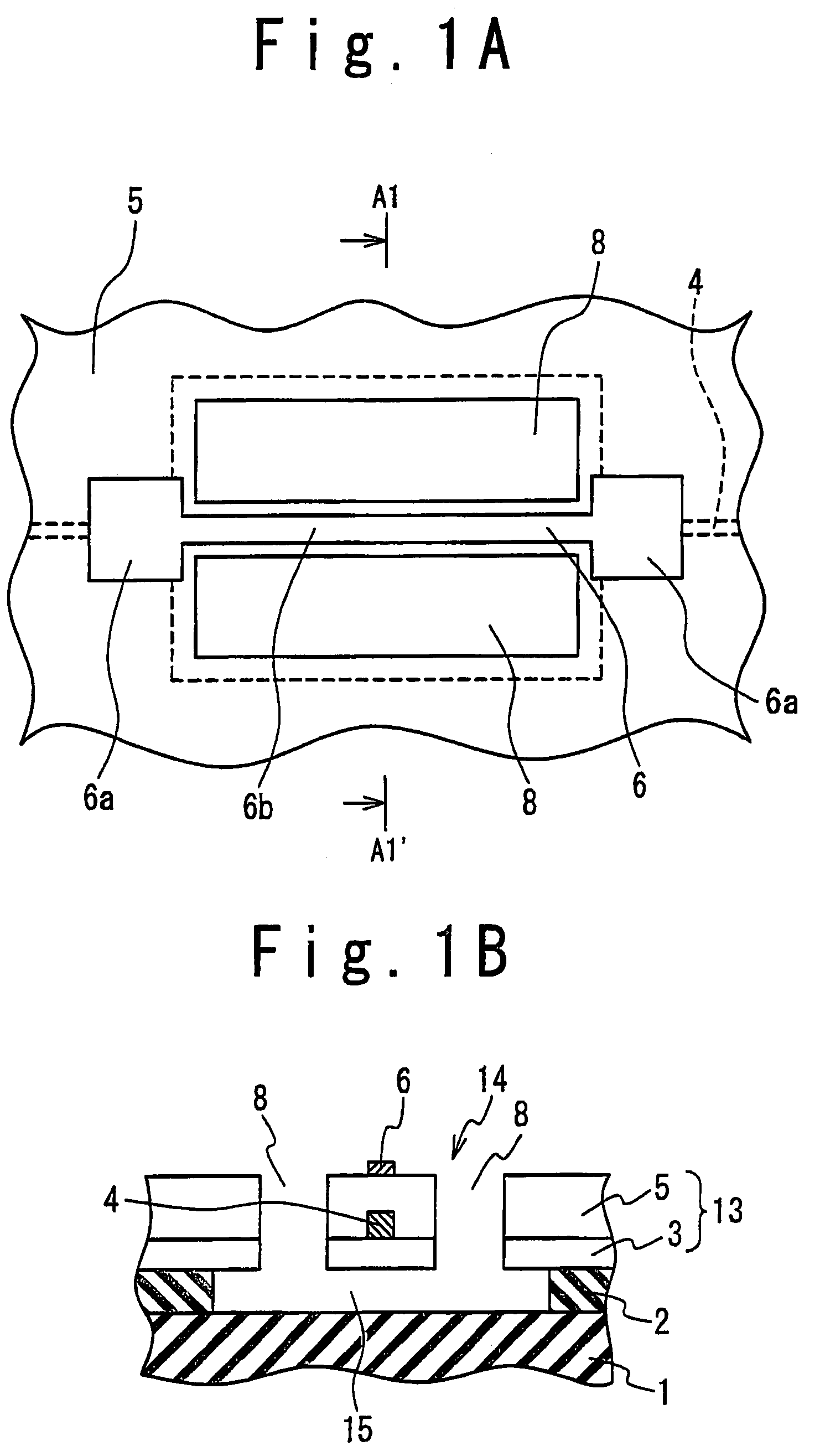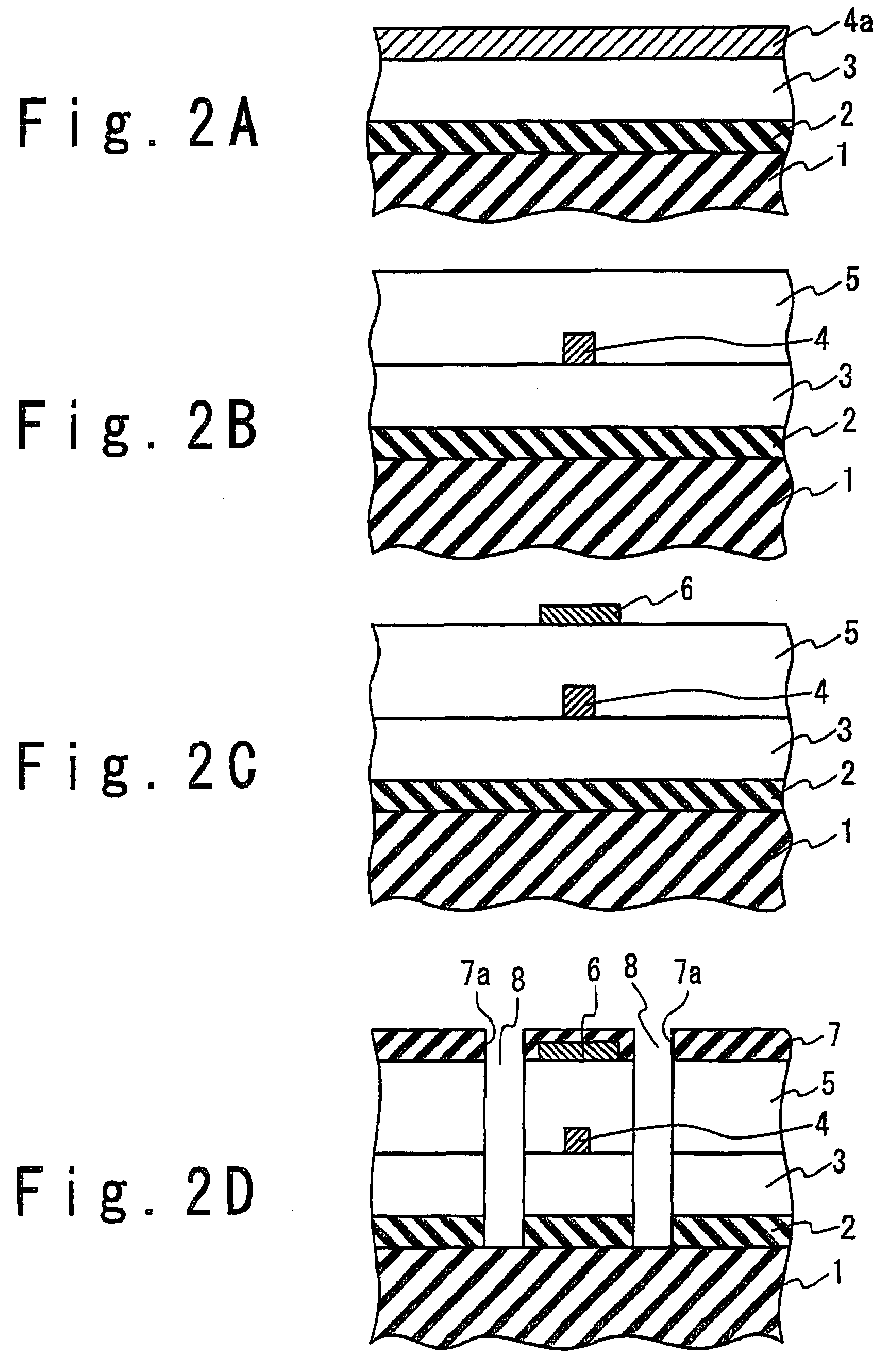Thermophotometric phase shifter and method for fabricating the same
a phase shifter and photometric technology, applied in the direction of optical waveguide light guide, instruments, optics, etc., can solve the problems of deteriorating film quality of polymer, excessive electric power consumption of the entire optical circuit, and inability to meet the requirements of high integration to the thermo-optic parts, so as to improve the strength of the optical waveguide, reduce electric power consumption, and increase the effect of electric power consumption
- Summary
- Abstract
- Description
- Claims
- Application Information
AI Technical Summary
Benefits of technology
Problems solved by technology
Method used
Image
Examples
first embodiment
[0093]Next, the method of the manufacturing the thermo-optic phase shifter in the first embodiment will be described. First, as shown in FIG. 2A, the sacrifice layer 2 is formed on the silicon substrate 1 having the thickness of 0.8 mm by an atmosphere pressure chemical vapor deposition method (AP-CVD), for example. The material of the sacrifice layer 2 is sufficient to have a selection etching property to the substrate 1 and the clad layer 13. For instance, the material of the sacrifice layer 2 may be a semiconductor or a glass and the like, and PSG is adopted in the embodiment. Moreover, the film thickness of the sacrifice layer 2 is 5 μm, for instance.
[0094]Next, the glass film having quartz as the main component such as a BPSG film is deposited by the AP-CVD method to have the thickness of 14 μm. Thus, the lower clad layer 3 is formed. A continuous deposition by the AP-CVD method is possible for the PSG of the sacrifice layer 2 and BPSG of the lower clad layer 3 by changing a do...
second embodiment
[0110]The electric power consumption of the thermo-optic phase shifter in the second embodiment is greatly dependent on the width of the sacrifice layer 2 to be remained, i.e., the width of the pole 2a. When the light with the wavelength of 1550 nm is inputted to the optical waveguide 14, the electric power consumption necessary to accomplish the phase shift for a half of the wavelength were actually measured. The result is that the electric power consumption is about 60 mW and about 120 mW when the width of the pole 2a is 5 μm and 10 μm, respectively. Therefore, the electric power consumption is decreased enough, comparing with the conventional thermo-optic phase shifter.
[0111]It should be noted that the optical waveguide 14 in the second embodiment needs 6 to 12 times of the electric power of the optical waveguide in the first embodiment which is completely separated from the substrate. However, the mechanical strength of the thermo-optic phase shifter in the second embodiment is ...
third embodiment
[0117]In the third embodiment, the sacrifice layer is selectively etched and one process is added. However, the stress generated in the sacrifice layer can be released. Therefore, the polarization dependence of the optical waveguide 14 can be decreased further more, and the optical characteristic can be improved more. Since the patterning of the sacrifice layer 2 is previously carried out, etching variation when the sacrifice layer 2 is removed by the wet etching can be resolved, then further reliability and the improvement of yield can be accomplished.
[0118]In addition, BHF can be used as etchant by forming the sacrifice layer 2 of PSG. Therefore, it is not needed that the sacrifice layer is formed of silicon and the fluorinated nitric acid is used as etchant, as disclosed in the above-mentioned Japanese Patent No. 3,152,182. Therefore, the thermo-optic phase shifter in the third embodiment is easier in manufacture than the thermo-optic phase shifter disclosed in the patent No. 3,1...
PUM
| Property | Measurement | Unit |
|---|---|---|
| length | aaaaa | aaaaa |
| distance | aaaaa | aaaaa |
| thickness | aaaaa | aaaaa |
Abstract
Description
Claims
Application Information
 Login to View More
Login to View More - R&D
- Intellectual Property
- Life Sciences
- Materials
- Tech Scout
- Unparalleled Data Quality
- Higher Quality Content
- 60% Fewer Hallucinations
Browse by: Latest US Patents, China's latest patents, Technical Efficacy Thesaurus, Application Domain, Technology Topic, Popular Technical Reports.
© 2025 PatSnap. All rights reserved.Legal|Privacy policy|Modern Slavery Act Transparency Statement|Sitemap|About US| Contact US: help@patsnap.com



